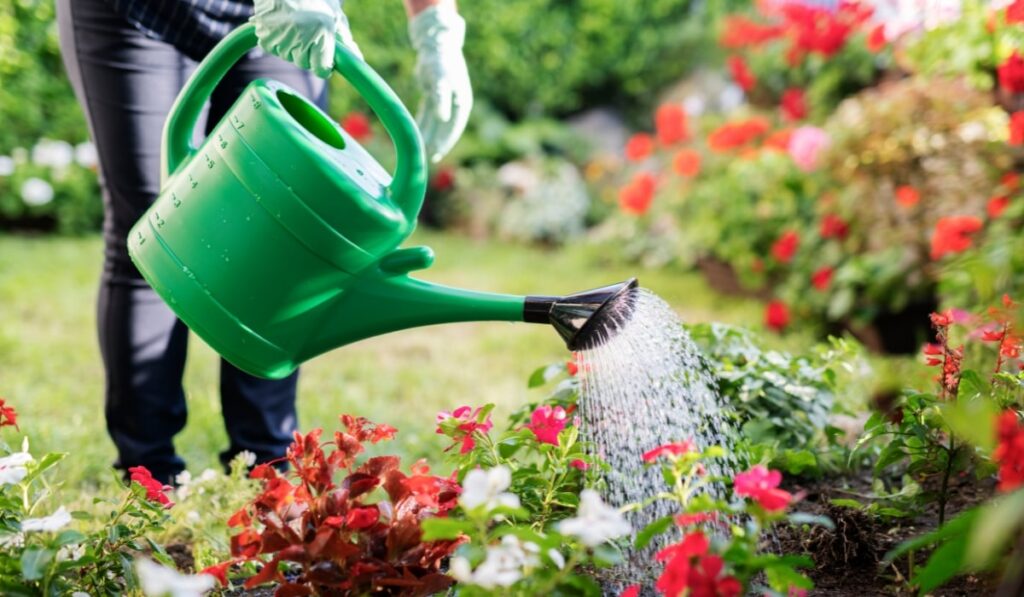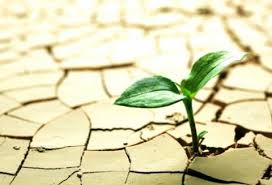Posts Tagged Water Conservation
Water-Saving Tips for Your Garden

Gardening is a great way to beautify your home while also providing fresh produce. However, it can also be a significant source of water consumption. With water becoming an increasingly scarce resource, it’s important to find ways to conserve it. Water-saving tips for your garden can help you save water and reduce your water bill.
There are many ways to save water in your garden. One of the easiest ways is to choose plants that are well-suited to your climate and soil type. These plants will require less water and maintenance, saving you time and money. Another way to save water is to use mulch around your plants. Mulch helps to retain moisture in the soil, reducing the need for frequent watering.
In addition to these tips, there are many other water-saving techniques that you can use in your garden. From using drip irrigation systems to collecting rainwater, there are many ways to conserve water while still maintaining a beautiful garden. By implementing these tips and techniques, you can reduce your water consumption and help to protect this valuable resource.
Efficient Watering Practices
Understanding Soil and Plant Needs
One of the most important things to consider when it comes to efficient watering practices is understanding the soil and plant needs. Different types of soil have different moisture retention properties, which means that some soils will require more water than others. For example, clay soil tends to hold onto water for longer periods of time than sandy soil, which means that plants growing in clay soil will require less frequent watering.
Additionally, it’s important to consider the type of plants that are being grown in the garden. Native plants and drought-tolerant plants are great options for conserving water in the garden, as they are adapted to the local climate and require less water to thrive. On the other hand, plants that are not well-suited to the local climate will require more water to stay healthy.
Watering Techniques and Scheduling
Another important aspect of efficient watering practices is using the right watering techniques and scheduling. For example, morning watering is generally recommended as it allows plants to absorb moisture before the heat of the day causes evaporation. Deep watering is also important, as it encourages plants to develop deep root systems that can better withstand dry spells.
It’s also important to consider the timing and frequency of watering. Overwatering can lead to fungal diseases and runoff, which can be harmful to the environment. Gardeners should aim to water their plants only when necessary, and to avoid watering during periods of rain or high humidity.
Irrigation System Efficiency
For those who use an irrigation system, it’s important to ensure that the system is as efficient as possible. This can be achieved by using water-efficient emitters, installing a rain-shutoff device, and regularly checking and maintaining the system. Irrigation system controllers can also be used to schedule watering times and ensure that water is not wasted.
In addition to these tips, gardeners can also consider using rain barrels or other rainwater harvesting systems to save water in the garden. Mulching and composting can also help to conserve water and improve soil moisture retention. By following these water-saving tips and using efficient watering practices, gardeners can help to promote sustainability and conserve water in their gardens.
Sustainable Garden Design and Maintenance
Choosing the Right Plants
Choosing the right plants for a sustainable garden is crucial. Native plants, drought-tolerant plants, succulents, and perennials are great options for water-saving gardens. These plants require less water, are adapted to the local climate, and are more resistant to pests and diseases. Yucca and verbena are examples of beautiful and low-water-use plants that can thrive in a water-saving garden.
Mulching and Ground Cover
Mulching is an effective way to reduce water usage in the garden. Organic mulch such as lawn clippings, leaves, and compost can help retain moisture in the soil, prevent weed growth, and improve soil health. Ground cover plants such as creeping thyme, clover, or sedum also help to retain moisture and reduce erosion.

Alternative Water Sources and Collection
Using alternative water sources can be a game-changer for water-saving gardens. Rainwater harvesting is a great way to collect water for the garden. Installing a rain barrel or water tank can help to store and use rainwater for irrigation. Ollas are also a great way to save water. These clay pots are buried in the soil and slowly release water to the roots of the plants, reducing water waste and promoting plant growth.
By implementing sustainable garden design and maintenance practices such as choosing the right plants, mulching and ground cover, and using alternative water sources, gardeners can create beautiful and thriving gardens while conserving water and promoting sustainability.
Frequently Asked Questions
What are effective methods for reducing water usage in your garden?
There are several effective methods for reducing water usage in your garden. One of the most effective ways is to choose plants that are native to your region and are adapted to the local climate. These plants will require less water and maintenance compared to non-native plants. Additionally, using mulch around the plants can help retain moisture in the soil, reducing the need for frequent watering.
How can you conserve water when maintaining a vegetable garden?
To conserve water when maintaining a vegetable garden, it is important to water the plants deeply but less frequently. This encourages the roots to grow deeper and access water from lower layers of soil. Additionally, using drip irrigation or a soaker hose can help deliver water directly to the roots, reducing water waste. Using a rain barrel to collect rainwater can also provide a free source of water for your garden.
What are the benefits of watering plants early in the morning for water conservation?
Watering plants early in the morning is beneficial for water conservation because the cooler temperatures and lower wind speeds help reduce evaporation. Additionally, watering in the morning allows the plants to absorb the water before the heat of the day, reducing the risk of water stress.
What personal habit changes can lead to significant water savings in garden care?
Personal habit changes that can lead to significant water savings in garden care include using a broom instead of a hose to clean patios and driveways, fixing leaks in hoses and sprinklers, and using a bucket instead of a hose to wash cars. Additionally, reducing the frequency of lawn watering and using drought-tolerant plants can help save water.
How can you utilize greywater from showers and baths for gardening purposes?
Greywater from showers and baths can be utilized for gardening purposes by diverting the water to a holding tank or directly into the garden. However, it is important to use biodegradable and non-toxic soaps and detergents to avoid harming the plants. It is also recommended to use greywater for non-edible plants only.
What are the most efficient irrigation techniques for minimizing water waste in gardens?
The most efficient irrigation techniques for minimizing water waste in gardens include drip irrigation, soaker hoses, and micro-sprinklers. These methods deliver water directly to the roots of the plants, reducing water waste due to evaporation and runoff. Additionally, using a rain sensor or a smart irrigation controller can help adjust watering schedules based on weather conditions, further reducing water waste.
Surviving Winter Drought

Since our “official” rainy season began October 2013, Sonoma County county has seen only two inches of rain bringing us the driest season that anyone can remember in the North Bay. This has resulted in another difficult growing season for farmers and gardeners. Many cities are already implementing water restrictions and encouraging citizens to voluntarily engage in water conservation.
So what can the home gardener do to use less water, enjoy the garden more, and help the environment? Here are DK Landscapings 10 easy tips:
1) Check for Leaks and Repair– Leaks can occur for many reasons and in many parts of watering systems. Review sites weekly for “weeping” valves, sprinklers, hose bibs, etc.
2) Choose Hand Watering – over automatic irrigation when possible. The more time you spend with the plants, the more they benefit from the attention, the sooner they establish, and the less water they need.
3) Avoid Runoff – To gauge the time to run off, turn on a sprinkler zone and track the time until water runoff begins. That is the amount of run time that should be entered into the controller followed by at least 30 minutes before the next cycle.
4) Inspect and Tune-Up your Sprinkler System Monthly – Adjust your sprinkler heads to prevent water draining off your lawn and down the gutter. Reduce sprinkler run-time, and don’t be a gutter flooder.
5) Get to Know Your Meter – Your water meter is an important conservation tool. It not only measures the amount of water you use, but can also tell you if there is a leak in your plumbing.
6) Incorporate Shrubs and Trees into the garden. Once established, these deep-rooted plants require far less water than shallow-rooted perennials and annuals.
7) Learn Soil/Plant Relationships – Landscape plantings need healthy soil to grow and thrive. The more healthy a plant is, the more stress it can tolerate. Knowing soil type will help with irrigation scheduling. Being able to identify plants will indicate how to best care for the landscape as a whole. In times of drought, reducing fertilizing and pruning can help plants survive with a reduced amount of water.
8) Water – between midnight and 6:00 a.m. to reduce water loss from evaporation and wind. Water your lawn and garden in 2 or 3 short cycles rather than one long one. Watering to a depth of 4″ to 6” will encourage deeper healthier roots and allow the plants to go without water for longer periods of time.
9) Reduce the size of water features (like a pond, stream, or water fountain) to conserve water while still attracting birds and wildlife.
10) Use a Broom, not a hose, to clean your driveway, deck, or patio. Washing a sidewalk or driveway with a hose uses about 50 gallons of water every 5 minutes.
DK Landscaping specializes in water conversation, water efficiency and water management and makes it a priority when serving our clients and our community every season of the year. It is a primary consideration in everything we do, from the selection of plants to the design of irrigation systems and the equipment choices we make.
Every drop matters, and each one of us counts.





